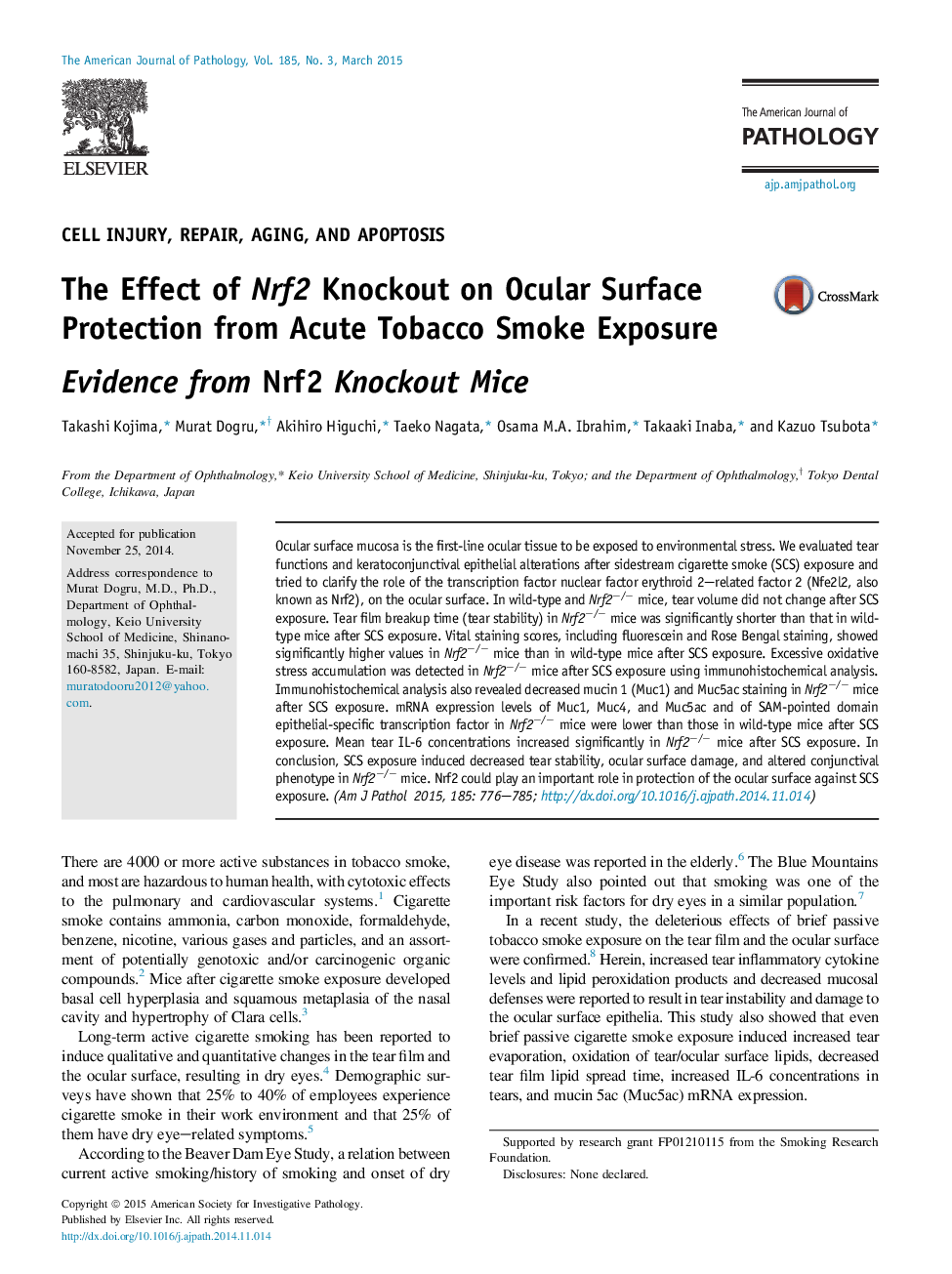| Article ID | Journal | Published Year | Pages | File Type |
|---|---|---|---|---|
| 5932526 | The American Journal of Pathology | 2015 | 10 Pages |
Ocular surface mucosa is the first-line ocular tissue to be exposed to environmental stress. We evaluated tear functions and keratoconjunctival epithelial alterations after sidestream cigarette smoke (SCS) exposure and tried to clarify the role of the transcription factor nuclear factor erythroid 2-related factor 2 (Nfe2l2, also known as Nrf2), on the ocular surface. In wild-type and Nrf2â/â mice, tear volume did not change after SCS exposure. Tear film breakup time (tear stability) in Nrf2â/â mice was significantly shorter than that in wild-type mice after SCS exposure. Vital staining scores, including fluorescein and Rose Bengal staining, showed significantly higher values in Nrf2â/â mice than in wild-type mice after SCS exposure. Excessive oxidative stress accumulation was detected in Nrf2â/â mice after SCS exposure using immunohistochemical analysis. Immunohistochemical analysis also revealed decreased mucin 1 (Muc1) and Muc5ac staining in Nrf2â/â mice after SCS exposure. mRNA expression levels of Muc1, Muc4, and Muc5ac and of SAM-pointed domain epithelial-specific transcription factor in Nrf2â/â mice were lower than those in wild-type mice after SCS exposure. Mean tear IL-6 concentrations increased significantly in Nrf2â/â mice after SCS exposure. In conclusion, SCS exposure induced decreased tear stability, ocular surface damage, and altered conjunctival phenotype in Nrf2â/â mice. Nrf2 could play an important role in protection of the ocular surface against SCS exposure.
